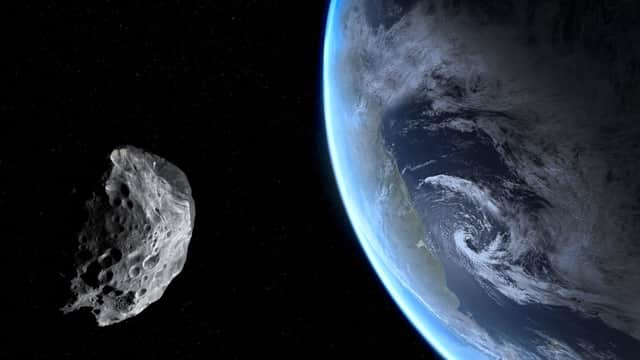NASA is tracking a huge ‘Near-Earth’ asteroid - what you need to know


The US National Aeronautics and Space Administration (NASA) is currently tracking a large asteroid, which is headed towards Earth's orbit at a speed of 31,400 mph.
The asteroid, named 465824 (2010 FR), is up to 270m wide and has been called a Near-Earth Object by NASA.
Advertisement
Hide AdAdvertisement
Hide AdThis means that it is 1.3 astronomical units (AU) from the Sun, with one AU being the average distance between the Sun and planet Earth.
Apollo asteroid
The giant flying space rock, first spotted by astronomers in 2010, is classed as an Apollo asteroid because it crosses the Earth's orbit.
However, it is not a threat to human life, according to scientists at the Center for Near-Earth Object Studies (CNEOS).
Tracking asteroids
Experts are currently tracking around 2,000 asteroids and comets which could threaten Earth.
NASA has been tasked with finding 90 per cent of rocks that could pose a significant threat to Earth, with these typically being around 460 feet across (140m) or bigger, and are easy to spot from a distance.
Earlier in August, a large space rock whizzed past Earth earlier in what scientists have now said is the closest flyby on record.
The space rock came within 1,830 miles (2,950km) of Earth, but Nasa had not seen it coming.
Nasa's Dr Paul Chodas told Business Insider: "The asteroid approached undetected from the direction of the Sun.
"We didn't see it coming."
The rock was between 6 feet (2m) and 18 feet (5.5m) wide, but posed no threat to Earth.